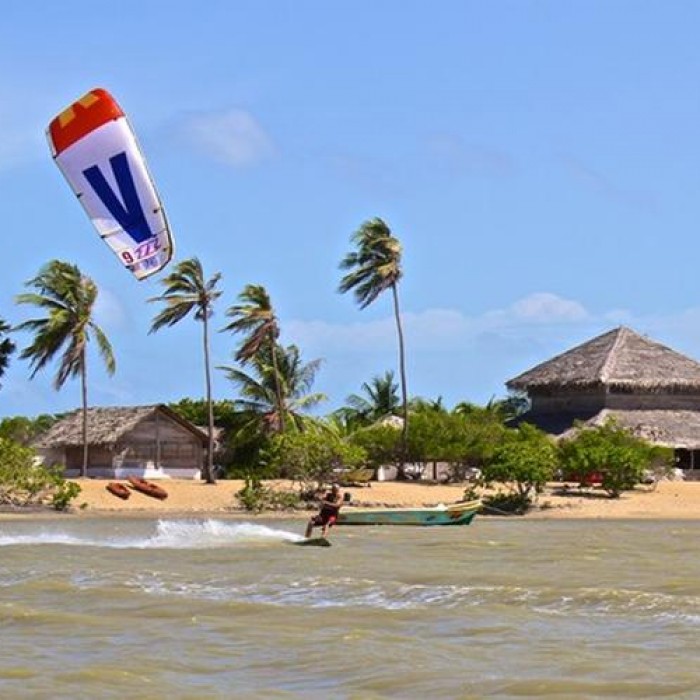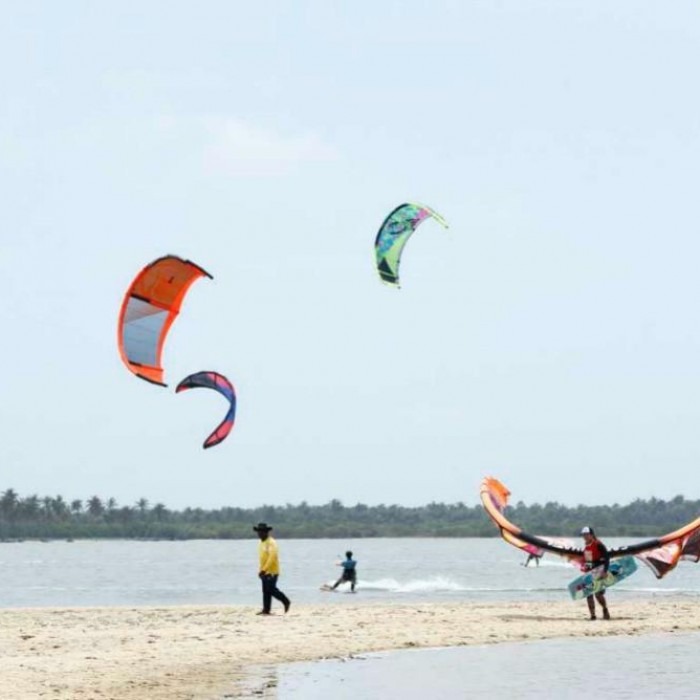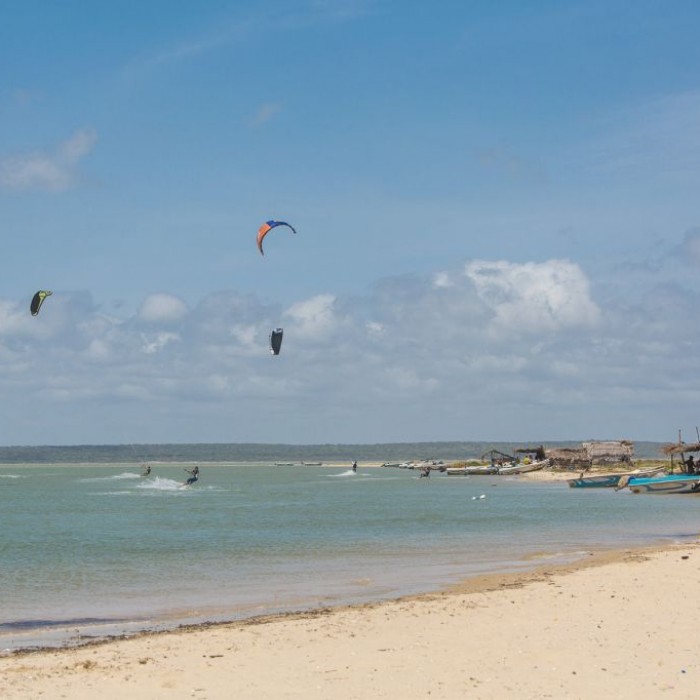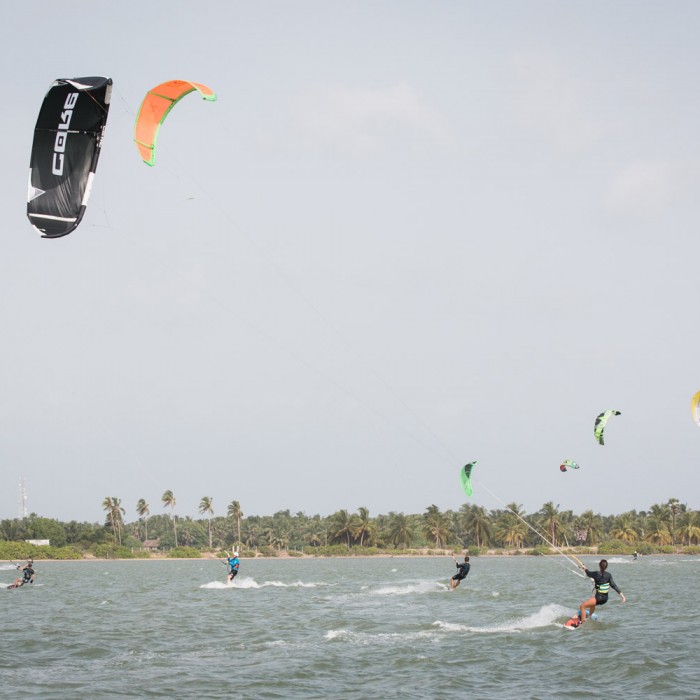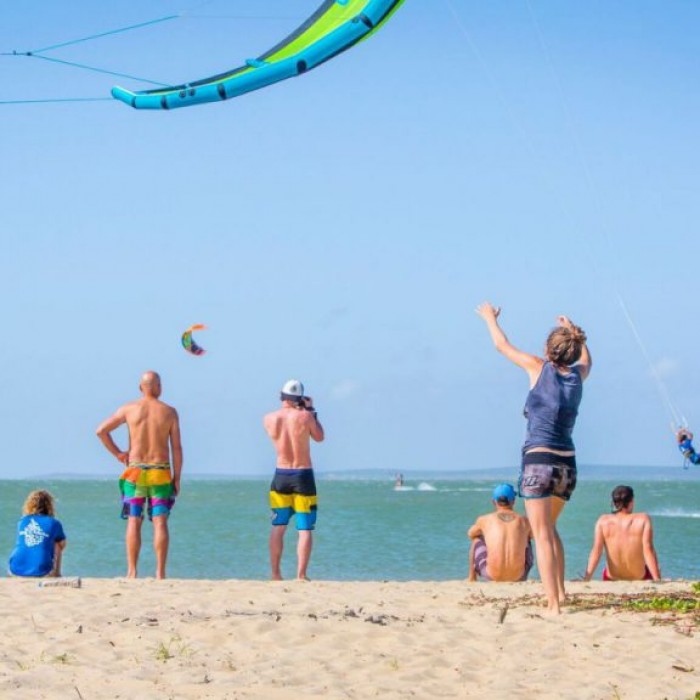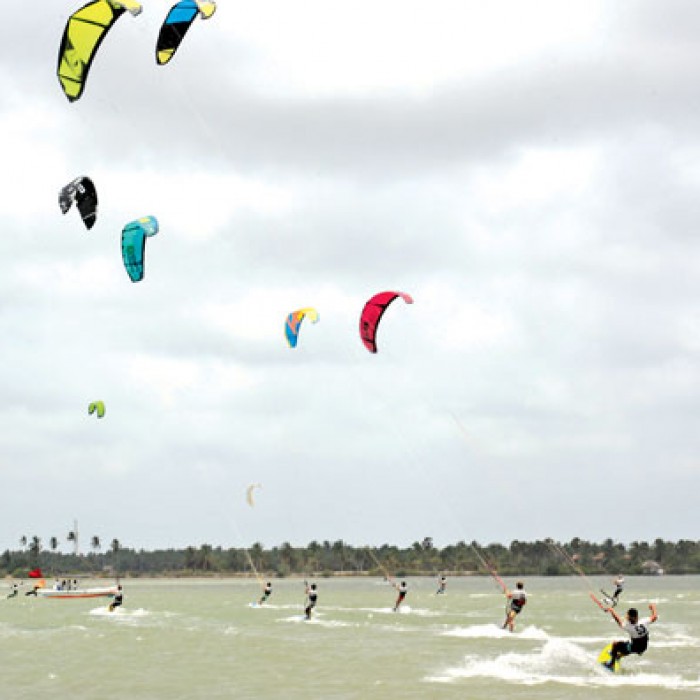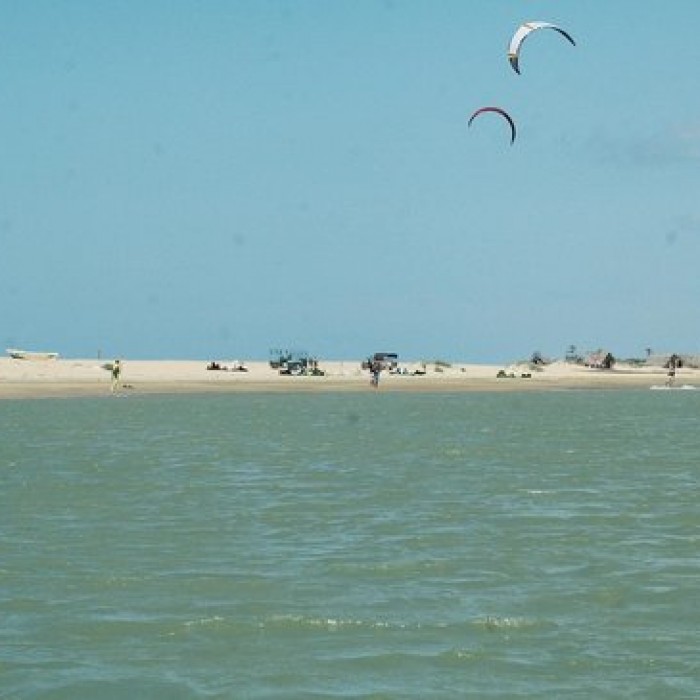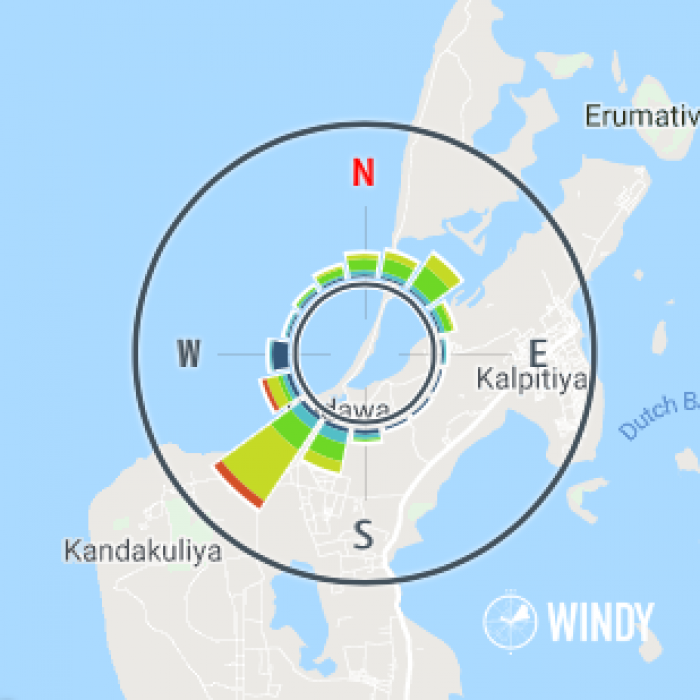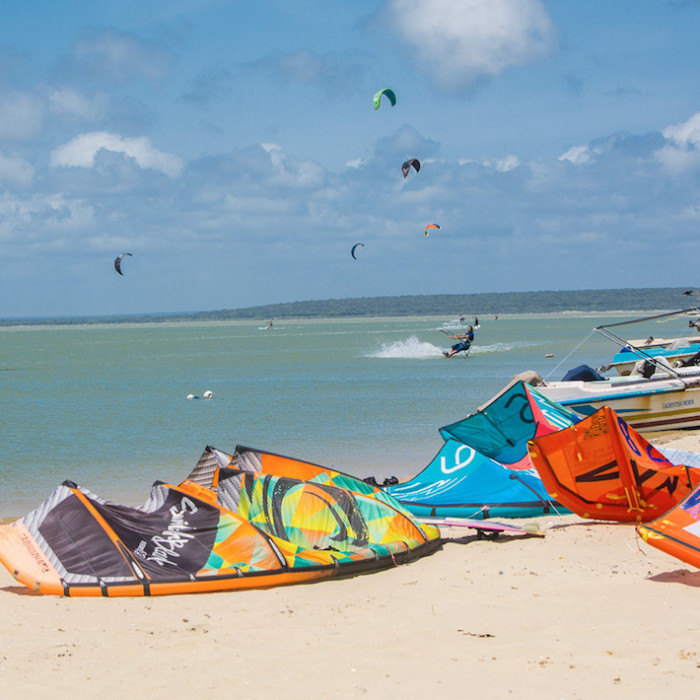Kitesurf at Kalpitiya
Butter flat water and Epic Downwinders
- Overview
- Good to know
- Getting there
Overview
Sri Lanka plays a significant role in the kiteboarding industry as it is the home of the factories and testing ground for many of the big brand names we know and love. This and a robust offering of kite schools and camps have resulted in Kalpitiya’s tourism becoming largely centred around the sport of kiteboarding. Kalpitiya is a small fishing town sitting on the peninsula of Puttalam Lagoon on the north-west coast of Sri Lanka. It is known best for its strong seasonal wind and plentiful lagoons which provide butter flat water perfectly suited to beginners and freestyle riders. Most of the kite schools are close to Kalpitiya lagoon with a few at nearby Kappalady lagoon. They provide accommodation and have cafes and restaurants in house. There are also a few other schools which are linked to hotels. Even if you don’t want or need lessons, it’s worth being around the kite schools for the atmosphere. There are quite a few kitespots in Kalpitiya offering a range of conditions from waves to small chop to butter flat as the lagoons are separated from the Indian Ocean by a single sandbar. On and off the water, Kalpitiya offers an abundance of stunningly beautiful nature and rich wildlife as well as UNESCO heritage sites. Northern Sri Lankan waters are home to dozens of species of whales, dolphins, and manta rays and the nearby Wilpattu National Park can give you an excellent day trip viewing elephants, crocodiles, and leopard communities.
Good to know
VISAS: Citizens of nearly every country can get a visa upon arrival for up to 30 days. It will cost $40 On Entry (with possible delays), or $35 Online. CURRENCY: Sri Lankan Rupee (LKR) PRICES: Beer: 350LKR (€1.55) Food: Restaurant Meal 2000LKR (€8.90) - Full board available in most Camps. Accommodation (Full Board): 6000-25,000LKR (€30-125.00) Kite Lessons: 6hrs private €265 Kite Gear rental: €70 per day. LANGUAGE: Sinhala, Tamil, English INTERNET: Recommended to get Local SIM card (Dialog, Mobitel and Etisalat). Wifi is available in Kite Centres, but when busy connection speed will suffer. TRAVEL ADVISE: renting a 125cc motorbike can be a very convenient way to move around. It costs around $10/day. TEMPERATURE: The climate remains warm and sunny for both seasons and air temperature during the day is around 30ºC/86°F. Water temperature is around 25ºC/77°F during each season. Wetsuits are not required for kiting, but a long sleeve rash vest may help protect from the sun and wind chill on stronger wind days.
Getting there
NEAREST TOWN: Kappalady NEAREST CITY: Kalpitiya City NEAREST AIRPORT: Bandaranaike International Airport (Colombo) [CMB/VCBI] Most flights arrive in Bandaranaike International Airport (Colombo) as the airport is connected to the rest of Asia as well as most of Europe and Dubai. The drive from the airport to Kappalady village or Kalpitiya City takes approximately 4 hours and is most easily arranged through your chosen kite school or hotel for around €70. Alternatively, if you prefer a cheaper method of travel, it is possible to reach Kalpitiya by bus or train. GETTING AROUND: Tuk-tuks are the most common mode of transport for visitors. Some of the kiteboarding schools at Kalpitiya lagoon will even provide access to them if you’re staying with them.
- Beach
- Wind
- Rules/Hazards
Beach
Kalpitiya and the surrounding areas are known best for their lagoons, which offer butter flat water perfect for beginners and freestyle riders. On the ocean side of the sand bar, there are also plenty of open sea spots which have wind chop forming small kickers, as well as some wave riding spots. Kalpitiya Lagoon (Winter & Summer Seasons) – The lagoon spans around 800m wide and exceeds 2km in length, giving you a giant playground of flat water to play in. At its deepest spot, the lagoon is around 1.5m deep making it perfectly suitable for beginners taking kitesurfing lessons. For the more advanced riders wanting to practice wake style manoeuvres, a slider and a kicker have been placed around halfway up the lagoon where the sand bar reaches slightly further into the lagoon, creating a butter flat section of water. Donkey Point — While Kalpitiya is undoubtedly best known for its lagoons, there are some waves to be ridden at Donkey Point. On a good swell, this spot can provide small to medium waves (1-2m). A 20minute tuk-tuk ride will get you to Donkey Point and, in the summer, it forms the starting point of a 7km downwinder back to Kalpitiya Lagoon. Kappalady Lagoon — This small and perfectly flat lagoon can host around 15 kiters on the water. A small sandbar separates the lagoon from the Indian Ocean; for riders wishing to adventure out, small clean waves can be found as they form off the reef which sits less than 100m away from the shore. Vella Island (Summer Only) – Vella Island is a long sandbar stretching around Portugal Bay. Located around 25km from the central lagoon, it is the perfect target spot for downwinders, and many schools will provide boat support for downwinders to this spot. Vella island’s curved sandbar creates an ideal expanse of flat water as it is sheltered from the outer ocean when winds blow from the south-west in the summer. Dutch Bay Point — South of Vella Island and overlooking the Wilpattu National Park, Dutch bay offers stunning views as you kite around. Ride past it on your downwinder to Vella Island or make an intentional stop there in the winter season for a session with butter flat water, mangroves and wildlife. During winter, this spot is offshore with winds blowing into Dutch Bay. As such, riders must be confident they can stay upwind. AMENITIES: Kite School, Gear Rental, Beach Assistance, Boat Shuttle, Showers, Toilets, Gear Storage, Kite Shop, Cafe/Bar, Accommodation.
Wind
Kalpitiya has two seasons; a summer season, running from May to October, and a winter season, running from December to February. Winds in the Summer blow from the South West and wind typically lasts all day. In the early season wind of at least 15knots occurs almost every day. By June, the wind increases to around a 20-25knot average, exceeding 30kts at times. Kite sizes 7-10m are most common for this season. As the wind is travelling overland directly before the lagoon, SW winds can be gusty. Winter winds blow from the North West and North East. They are generally lighter, and less gusty than the summer season as the wind comes from the sea. Wind in this season can be less frequent achieving 4-5 days of wind in a week, typically blowing 12-20kts. Around the Full moon, winds lessen and light or no wind days can occur in this time. During the summer season, the wind comes directly from the ocean, resulting in the less gusty wind than. During the winter season, as the wind direction changes, this spot becomes gusty as the wind passes over land. WIND DIRECTIONS: SW, NE, NW WINDIEST MONTHS: High season - June, July, August, December, January. Mid Season - May, September, October, February.
Rules/Hazards
The sandy bottom of the lagoon is also host to a scattering of sharp shell fragments. Beginners or anyone who puts their feet down a lot would be advised to wear booties to prevent cuts to the feet. Be respectful of local fishermen and their net. They usually come to the lagoon before 9 am and after 5 pm, though most of the fish at night. Fishing is the livelihood of most villagers, so it’s important to give them priority during these hours if you see them around. *If you need kite related service like kite repairs, lessons or beach assistance it is recommended to choose resorts that provide these services. ** It is always recommended to seek additional knowledge about the spot from local kite school or qualified instructors.
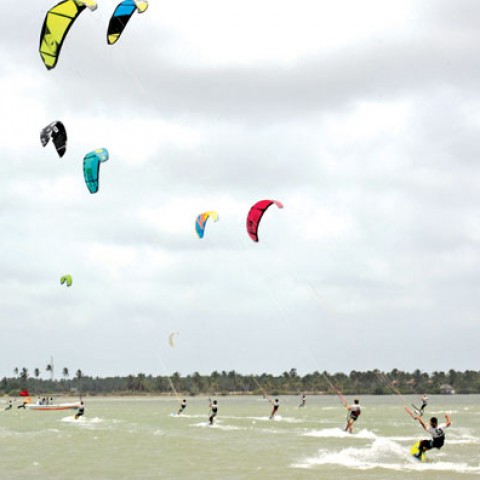
Info
Rider Level:
- beginner, intermediate, advanced
Discipline:
- freeride, foiling
Spot Type:
- Flat to Choppy water; Lagoon, Small to medium waves: Open ocean
Launch area:
- Sand
Tidal:
- no
Windiest Months:
- Jan, Feb, Mar, May, Jun, Jul, Aug, Sep, Dec
Around Kalpitiya
Things to do
The latest shots
photo gallery
You’ve read all about it, now feast your eyes on your next kiting destination.
